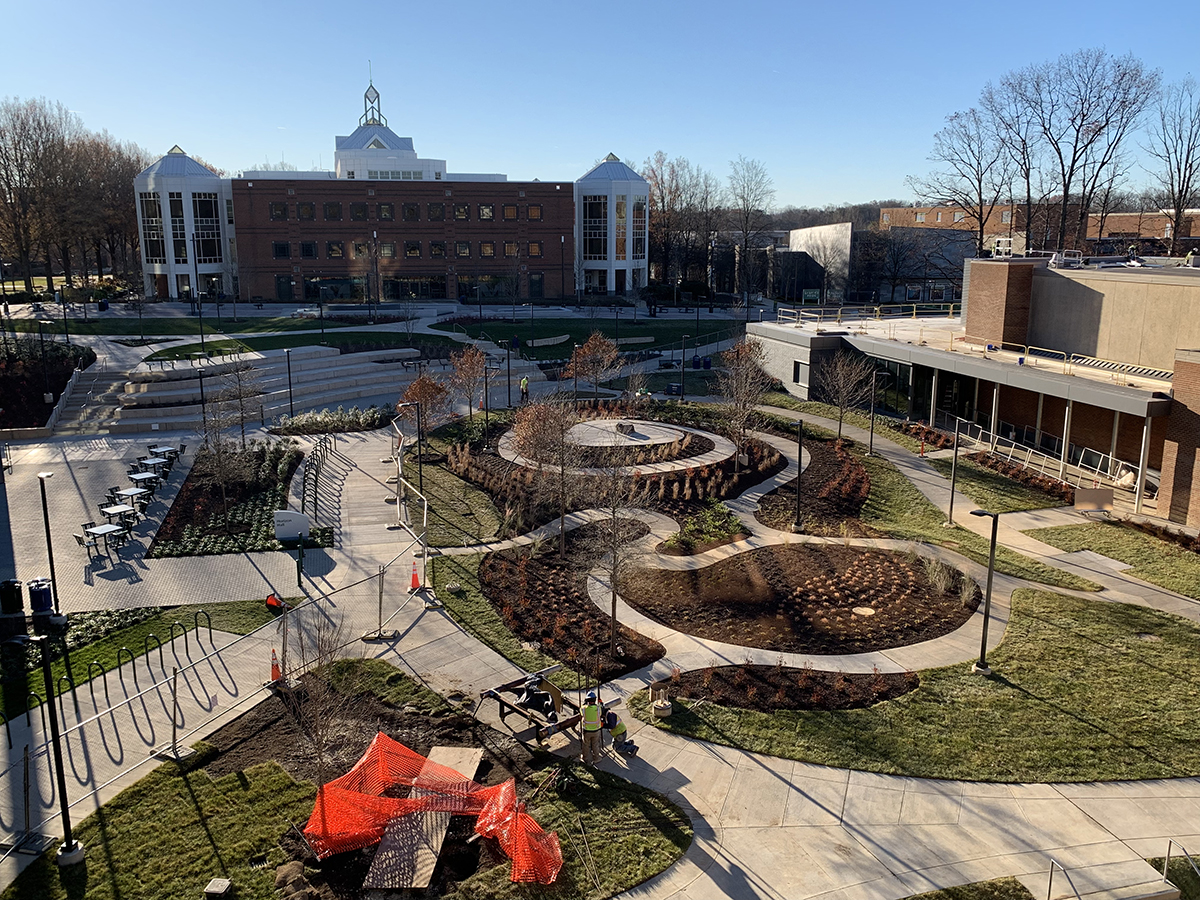
The Core Campus Project, which for the past three-plus years has reshaped and remade the center of George Mason University’s Fairfax Campus, will be largely finished by the time faculty and staff return from winter break.
The final steps to be done by Jan. 3 include completion of the meditation labyrinth and a new dining patio outside the side entrance to SUB I. Even the “Woman in Hammock” statue that used to stand next to the demolished Robinson A building will again be displayed.
All that will remain after that, said Cathy Pinskey, program director at Mason Facilities, is the furniture move-in at the refurbished Harris Theatre. That should be accomplished so faculty and staff can access the building by Jan. 12. Classes are set to begin there on Jan. 24.
“It’s very rewarding, I have to say,” Pinskey said of the project’s completion. “It’s just been a great project and a great addition to the center of campus. It really transformed everything. I’m very happy we’re crossing this threshold.”
Anchoring the project, which broke ground in the summer of 2018 after two and a half years of planning and design, is Horizon Hall, a six-floor, 218,000-square-foot academic center that replaced the antiquated Robinson A and B buildings.
Wilkins Plaza now extends from Southside to the Mason Pond Parking Deck and includes the Enslaved People of George Mason Memorial.
There is a new amphitheater with seating, tables, chairs, event power sources and accessible Wi-Fi, and extensive green space with dozens of trees replacing the trees that were taken out to make room for the expanded plaza. Some of those trees were repurposed to create the wood benches in Horizon Hall.
Harris Theatre will seem like a different space after a complete overhaul that added a new lobby, bathrooms, ticket office, and stage floor. There is a new sprinkler system, HVAC system, house lights and carpeting, new accessible dressing rooms, expanded backstage storage and refreshed dressing rooms on the lower level.
“The success of the Core Campus Project had a lot to do with the architects, the engineers and the contractor,” Pinskey added. “Particularly, with all the challenges: the length of the project, construction fatigue and the pandemic.”
On the project from the beginning was the design firm of Perkins&Will (Stephanie Wolfgang and Paul Harney, project managers) and the construction firm of Whiting-Turner (Perry Mahle and Jeff Downs, project managers).
The Mason project inspectors were Greg Rahimzadeh and Mirwais Safi.
“It’s really transformative,” Wolfgang said of the project. “It really changed the entire atmosphere in the center of campus. It really helps create that student-life corridor that wasn’t there before.”
Asked how she felt with the project coming to an end, Wolfgang said, “I just wish that I’ll have another project filled with as much meaning as we were able to embed in this one. Will I be able to have clients who were as engaged, students who were as engaged, faculty who were as engaged? I hope so.
“It’s a huge point of pride and a sense of accomplishment,” she added. “I hope others enjoy the space as much as I do seeing it complete.
